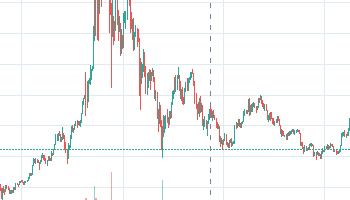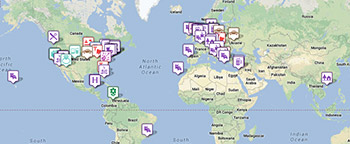It’s hardly even worth saying that technology has revolutionised every single market, but it is particularly notable within the financial industry. Cash is no longer king, and consumers hardly even see a dollar bill or a note anymore, we tap our cards, transfer money via an app and apply for loans almost purely online.
Consumers may not notice the correlation, but the advancement in technologies did coincide with the global economic crash of the late 2000s. For many economists and notable professionals working in the industry, this was the nail in the coffin for traditional lenders, banks and even credit unions. There are more moderate opinions on the matter, but there is no disputing that traditional banking institutions are experiencing a downturn in business.
Although huge, traditional banks are still major players within the lending and financial industries, FinTech alternatives, or services that have been facilitated by tech, usually translate to a cheaper and more convenient alternative. When you’re talking about cutting costs by using an online business, usually because of the lack of overheads, it’s extremely attractive to a consumer; offering them loans at lower rates because of minimised costs, coupled with investor appetite, consumers are going to opt for the loan product that offers them the most flexibility and lowest rate – which is typically online!
Companies like Monzo, who are purely online, current account providers now have more than three million customers around the world, taking advantage of flexible borrowing and spending. Similarly, direct lenders online are also absolutely booming for products like personal loans, which has been the biggest change for consumer credit since the crash in 2008.
Is FinTech Responsible For The Boom In The Personal Loans Market?
TransUnion, one of the biggest credit report bureaus studying US markets, cites “upstart FinTechs” as the biggest driver in the growth and prosperity of the personal loans industry. In 2014, the personal loans pocket of the financial market was expected to account for 5% of all consumer credit. It is now expected to represent an incredible 38%, only five years later. So, what are the tools that FinTechs use to out-perform traditional lenders:
Quicker Approvals – Not only are applications completely online, and consumers can enjoy the convenience at applying on the move or wherever they are, but the application to approval process is so much quicker than traditional lenders. There is no paperwork and minimised manual work involved that means FinTechs are more likely to approve loans within the same day you apply because they use APIs (Application Programming Interfaces). This allows providers within a market access to information that improves efficiency and responsible lending.
Compliant and responsible lenders will still have a manual aspect to their credit and affordability checks. Quick access to cash also allows consumers to stay dynamic and handle an unexpected bill or emergency when it occurs, which could be extremely appealing.
Flexibility – In our modern society, customisation and flexibility is one of the ultimate commodities. Being able to customise your loan amounts and avoid bracketed loans or rigid terms is another thumbs up for FinTech online lenders. As a result of personal loans skyrocketing in the last couple of years, investors are hungry to get involved in the market. This means that online lenders have a greater lending capability to help more people – which is exactly what consumers want.
Secured Lending Changes – With higher lending limits on standard, unsecured personal loans from FinTech lenders, it could be possible to see a down turn in the secured loans market, as popularity shifts towards more convenient alternatives, such as or peer to peer lending or personal loans that will not put property or assets at risk. However, this could be the next route for expansion for online creditors and FinTechs. Even though there is more lending appetite when compared to traditional banks, direct lenders do still want to see guarantees and feel confident in their loan investments. This means that secured loans online are becoming more commonly offered by comprehensive online lenders as they can increase their loan limit to upwards of $100,000.
Mortgages are a secured loan product that is resistant to technological developments. This is partially due to the number of variables involved in the process, i.e. how many people are involved to complete a chain. Investigations and studies into the sector do identify that mortgage providers will soon be leveraging similar technology to online lenders, including digital underwriting programmes, AI to improve the customer journey and digital ID verification.
Lower Cost Loans – Automated processes, fewer overheads and the demand in the sector is pushing interest rates lower as they become increasingly sought after. This means that the cost saving continues to improve, ultimately propelling the reputation of an online personal loan as a reliable, safe and competitive way of sourcing credit.
Avoid The Cost Of Outdated Brokers – It’s not just direct lenders that are booming, FinTech brokers are also on the rise. Comparison algorithms and software help consumers save time and money, and even avoid broker fees altogether, and they present the best financial products available for a consumer’s unique circumstance. The new technology no longer performs a hard credit check, which is more advantageous for consumers, allowing them to guarantee the best deal and stay agile, assessing the options available to them.
There Are Other Factors, Though - Despite the progression in technology making online loan providers more responsive and dynamic as a result of technology, the progression is also timed with the recession of the late 2000s, as indicated earlier in this article. Think about the Great Depression and what that did to revolutionise banking in the 1940s. A similar, technological, second wave revolution occurred without too many people even noticing. During the recession, (or credit crunch as it was known in UK markets), traditional lenders and banks became extremely tight with their lending procedures and were tight fisted when it came to lending to consumers. This created a gap in the market and in stepped online lenders to reinvigorate the market and help those who had been refused credit.
How Does FinTech Improve Access To Cash For Borrowers?
We have established that FinTech lenders are speeding up the process from application to acceptance. Reportedly, Kabbage can “deliver a loan to a small business in 7 minutes”. This on-demand kind of credit has only recently been available, because a decade ago, the technology and necessary data to make the quick decisions did not exist.
Data That Means Safer Borrowing
As much as lenders perform their role by providing credit to consumers, to succeed and be an integral, dynamic and agile player in the competitive market, they are also required to effectively utilise data analysis. Swiftly interpreting data a consumer or applicant supplies a company with is how they are able to assess the risk of offering a loan, and therefore what the interest rates should be.
This is now safer and more precise than traditional methods for assessing a borrower’s risk. Ultimately, this has improved the accessibility of credit for those in low income households or those who might have a bad credit report. This is because those people who may be unsuitable for loans from traditional banks are now evaluated using a different set of metrics and can receive suitable, alternative financing for their situations, essentially opening the number of people FinTechs are able to draw profit from.
As we have also already mentioned, new technology means that those with low credit scores are also free to apply without putting their credit score at greater risk. Comparison tools do not mark an individual’s credit report with inquiries. However, if too many FinTech loan customers have bad credit or are from low income housing, these lenders are unlikely to see the returns if we enter another recession. This could be quite dangerous, especially if the consumer credit market is ruled by this one loan type. Regulators have been working to stabilise and protect the market in the event of a crash.
FinTech Is Helping To Educate Consumers About Their Credit
Traditional lenders are able to keep their consumers in the dark about the credit scoring formula they have decided to use. As a result, many consumers who are rejected for a loan are left in the dark. It’s not brand new information, but consumers can now check their credit score online as regularly as they wish to, without harming their credit score.
This access to information ensures consumers are better educated and understand their credit profile. Moreover, there are new means for assessing creditworthiness outside the remit of major bureaus. FinTech tools such as CreditLadder are partnering with major bank Nationwide to help consumers get on to the property ladder because they have created a new formula for assessing creditworthiness that factors in rent payments. This has previously not been a valid consideration for those applying for a mortgage.
Millennial Lending Market – What’s Changing In The Market?
Data shows that millennials and the generations that follow are the biggest demographic when it comes to FinTech lenders. It is safe to assume that this demographic’s desire for an ‘on demand’ lifestyle means that they want faster access to cash, too, with money appearing in the recipients account as soon as an hour after application is submitted.
The loans market is also diversifying; as much as personal loans are ruling the market for consumer credit in terms of value, ‘buy now pay later’ business models and creditors are also on the rise. These lending schemes are not new but have had a FinTech facelift in recent years.
These credit schemes traditionally would be offered in-house by a store or via their catalogue. Today, they are integrated with online shopping check out pages and tend to be dedicated creditors that partner with retail sites. The business model helps consumers spread the cost of what they are buying, with the alternative payment method turning out to be quite lucrative for their retail partners as research shows it increases the basket size by 20-30% on average.
Buy Now Pay Later business models are successful because they provide instant gratification but delay the price you have to pay. They can be quite dangerous means of credit, but millennial consumers (and the younger generations) are lapping it up. This could suggest a shift in towards later-payments and yet another step away from quite archaic looking credit cards.
New start ups in the FinTech loans industry do not necessarily have to be lenders; the millennial desire for instant gratification has also changed our attitudes towards how we process information. Credit scorers, price comparison websites, mobile payments, robo and AI-advisors are all reshaping the financial and loans environment.


 Updated every 10 minutes
Updated every 10 minutes


